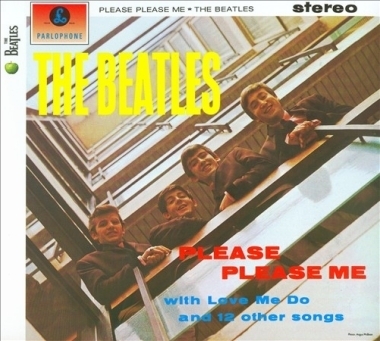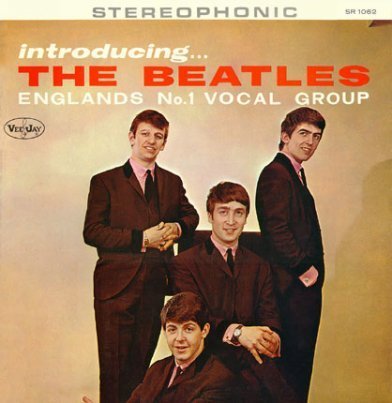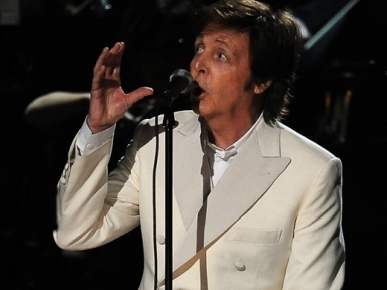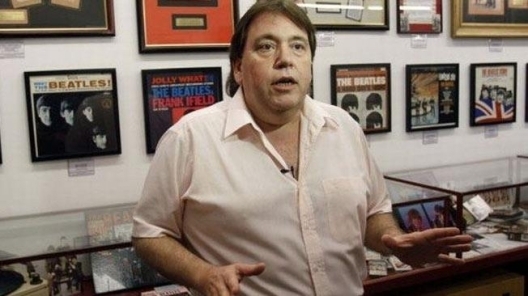The Beatles: 50
th
Anniversary of the Fab Four
The Beatles released their first album, Please Please Me
, March 22, 1963. Produced by the legendary George Martin, the record contains such fondly remembered songs as “I Saw Her Standing There,” “Love Me Do,” “Do You Want to Know a Secret,” “Twist and Shout,” and, of course, the title track.
To commemorate the 50th
anniversary of this monumental pop culture event, Omega Auctions in the U.K. held an auction March 22, 2013 entitled “The Beatles Collection.” In addition to the expected assortment of rare vinyl and memorabilia, the auction featured a collection of 65 slides, along with their respective copyrights. The photos were taken by Dr. Robert Beck, who, according to the Associated Press, “died in 2002 and left them in an archive of photographs and slides in his Hollywood home.”
What makes the slides remarkable, other than the fact that they depict the Fab Four (as they came to be called) in their youthful glory, and the fact that they’ve been unpublished all these years, is that they were shot in color. During the early 1960s, color film was prohibitively expensive, meaning that the vast majority of early Beatles photos are black-and-white.
One of only a handful of bands in which each member is a household name and has his own set of rabid fans (the original KISS lineup is another example), the Beatles, who played together for just over a decade—from 1960-1970—consisted of Paul McCartney (bass), John Lennon (guitar), George Harrison (lead guitar), and Ringo Starr (drums). All four members shared writing and lead singing duties, but Lennon and McCartney sang and wrote most of the songs.
The Beatles have their origins in a little band called The Black Jacks, which Lennon formed in 1957 when he was just 17 years old. Shortly after the formation of The Black Jacks, the group renamed themselves The Quarry Men after the Quarry Bank Grammar School in Liverpool, where most of the band mates attended school. The Quarry Men played “skiffle” music, which is a decidedly European fusion of blues, folk, and jazz.
During the summer of 1957, The Quarry Men were getting ready for one of their typical small-time gigs at a church performance hall (St Peter's Church Hall, to be precise) when a member of the band introduced Lennon to Paul McCartney, a 15-year-old south paw who had taught himself how to play guitar. After the set, McCartney auditioned for the band, and he joined the group in October.
In early 1958, Lennon began moving The Quarry Men away from skiffle music and toward the increasingly popular genre of rock ’n’ roll, prompting the group’s banjo player to leave. Enter McCartney’s friend, guitarist George Harrison, who was only 14 at the time. Lennon was reluctant to let such a young person join the band, but Harrison was persistent and was let in a month later.
In early 1959, The Quarry Men, which consisted of Lennon, McCartney, and Harrison, along with piano player Duff Lowe and drummer Colin Hanton, covered Buddy Holly's "That'll Be the Day." And, portending things to come, they recorded a Lennon/McCartney original, "In Spite of All the Danger." Shortly thereafter, The Quarry Men broke up, leading to the formation of The Moon Dogs, comprised of Lennon, McCartney, and Harrison.
Drummer Pete Best, whose mom owned The Casbah Coffee Club where The Quarry Men frequently played, and bassist Stu Sutcliff, a friend of Lennon's from the Liverpool Art School, joined Lennon, McCartney, and Harrison in 1960, playing as The Beat Brothers, The Silver Beatles, and Long John and The Beatles, before simplifying their name to the Beatles (from the word “beat”). After 18 months of playing clubs in Scotland, Germany, and England, Sutcliffe, the so-called “fifth Beatle,” left the band to pursue a career in art (sadly, Sutcliffe died of an aneurism in 1962).
In June of 1962, the Beatles auditioned for producer George Martin of Parlophone Records (a subsidiary of EMI) at the now-famous Abbey Road Studios, where the band would end up recording most of their records. Martin saw potential in the band, but didn’t care for the talents (or lack thereof) of Best, who wasn’t exactly a musical favorite among the other band members. Thus, he was replaced by Ringo Starr of Rory Storm and the Hurricanes.
A couple of the singles on Please Please Me
received some airplay in the U.S., but the record itself was not—Parlophone's sister label in the U.S., Capitol Records, wasn’t sure that a British band would do well in America (the Beatles would soon be at the forefront of the British Invasion, which also included such groups as the Rolling Stones and the Who). The band’s second album, With The Beatles
, was released in Nov. 1963, becoming the first LP to sell a million copies in the UK.
Finally, in Jan. of 1964, Introducing... The Beatles
was released as the first Beatles album in the U.S. It featured the same tracks in the same order as Please Please
Me
. A second version of Introducing... The Beatles
was later released, thanks to a dispute over song copyright disputes, with "Ask Me Why" replacing "Love Me Do" and "Please Please Me" replacing “P.S. I Love You.”
The rest of the history of the Beatles, who progressed from simple pop hits early on to sophisticated, experimental, and psychedelic rock later on, is common knowledge, even among casual fans.
Highlights include: their arrival at John F. Kennedy International Airport on Feb. 7, 1964; an appearance on the Ed Sullivan Show
watched by approximately 73 million people; the release of the first Beatles movie, A Hard Day’s Night
(1964); a concert at New York's Shea Stadium attended by 55 million people (a record at the time); John Lennon declaring that the Beatles are “more popular than Jesus now” (setting off a firestorm of controversy); the release of the groundbreaking Rubber Soul
(1965); the band’s last concert in Aug. 1966, occurring at Candlestick Park in San Francisco; the release of the innovative Sgt. Pepper's Lonely Hearts Club Band
(1967); the creation of their own label, Apple Records, in 1968 (The Beatles
, a.k.a. The White Album
, was the first LP released under this label); and the breakup of the band in 1970.
After John, Paul, George, and Ringo went their separate ways, each embarked on successful solo careers, including stints with other bands, such as Paul McCartney with Wings and George Harrison with the Traveling Wilburys. Sadly, Lennon was shot and killed in 1980 by a demented former fan (Mark Chapman), and Harrison died in 2001 of lung cancer. Starr and McCartney continue to perform, the latter having appeared the 2012 Grammy Awards show at the Staples Center in Los Angeles.
The Beatles have sold more than a billion records (albums and singles) worldwide, making them the best-selling band in the history of the recording industry. They’ve also been merchandized more than just about any other band, with the possible exception of KISS (who founding member Gene Simmons has called the “heavy metal Beatles”).
Hardcore fan Rodolfo Vazquez, who opened a Beatles museum in Buenos Aires, Argentina in 2011, owns the world’s largest collection of Beatles memorabilia at 8,500+ items and counting (he appeared in the Guinness Book of World Records
in 2001, when he owned fewer than 6,000 items). Vazquez got the idea for a museum after exhibiting a small portion of his collection over short periods of time.
“The idea is to show my collection permanently,” Vazquez told the Associated Press. “Otherwise all of it would be closed into boxes and trunks without anyone being able to enjoy them.”
Vazquez doesn’t have a clue how much his collection is worth, but he does have some idea which items are among his favorites, including concert tickets, signed albums, show programs, a letter from Aunt Mimi talking to a friend about John, a box of promotional condoms bearing the likeness of John and Yoko, a brick from Liverpool’s Cavern Club, a tile from Strawberry Fields, and a full box of Chu-Bops Bubble Gum Records.
Vazquez was a Beatles fan from age 10 when he bought the LP Rubber Soul
, which contains such iconic tracks as “In My Life,” “Drive My Car,” “Michelle,” and “Norwegian Wood (This Bird Has Flown).”
"With the song ‘In My Life,’ I fell in love with the Beatles,” he said.
The Beatles never played a gig in Argentina, but Vazquez organizes “Beatle Week” in Beunos Aires each year, in which cover bands compete to be the best faux version of the Fab Four. Vazquez is active in the Beatles fan community, frequently buying and trading with other collectors, and he derives tremendous pleasure from showing his collection to fans. However, there is something amiss from this Beatles collector’s life.
“What I am missing is to shake hands with Paul McCartney and Ringo Starr, hug them and chat with them a little bit,’’ Vazquez said. “It is what would complete me, and I would be the happiest collector on earth.”
MY FONDEST BEATLES MEMORY: Listening to the compilation 8-track, Love Songs
, when my sister would drive me to school when I was in junior high. Such songs as “Yesterday,” “I’ll Follow the Sun,” and “Norwegian Wood” will never get old.





